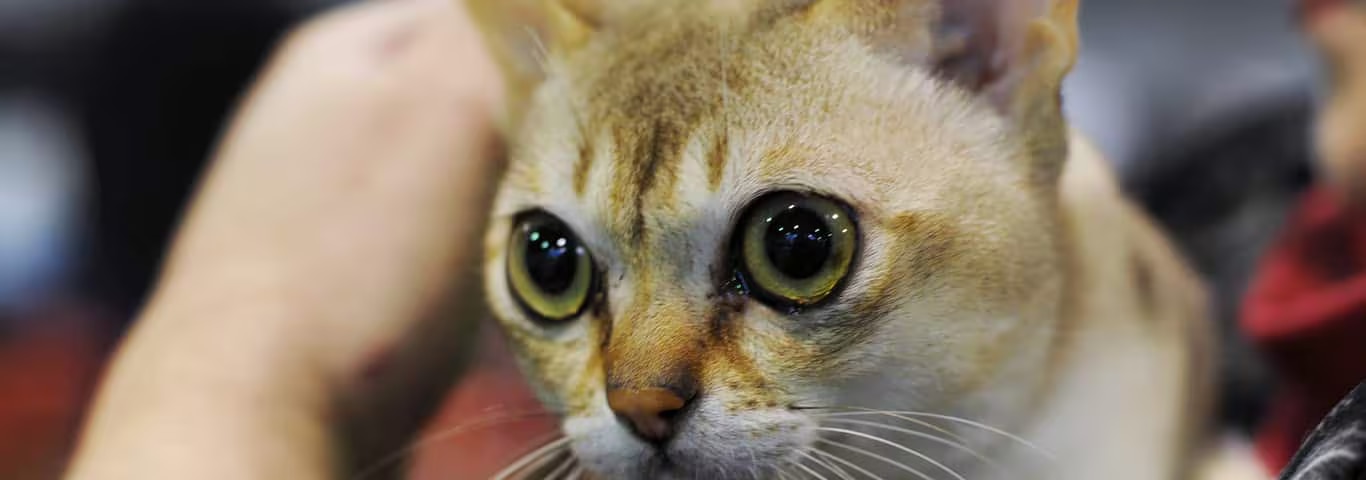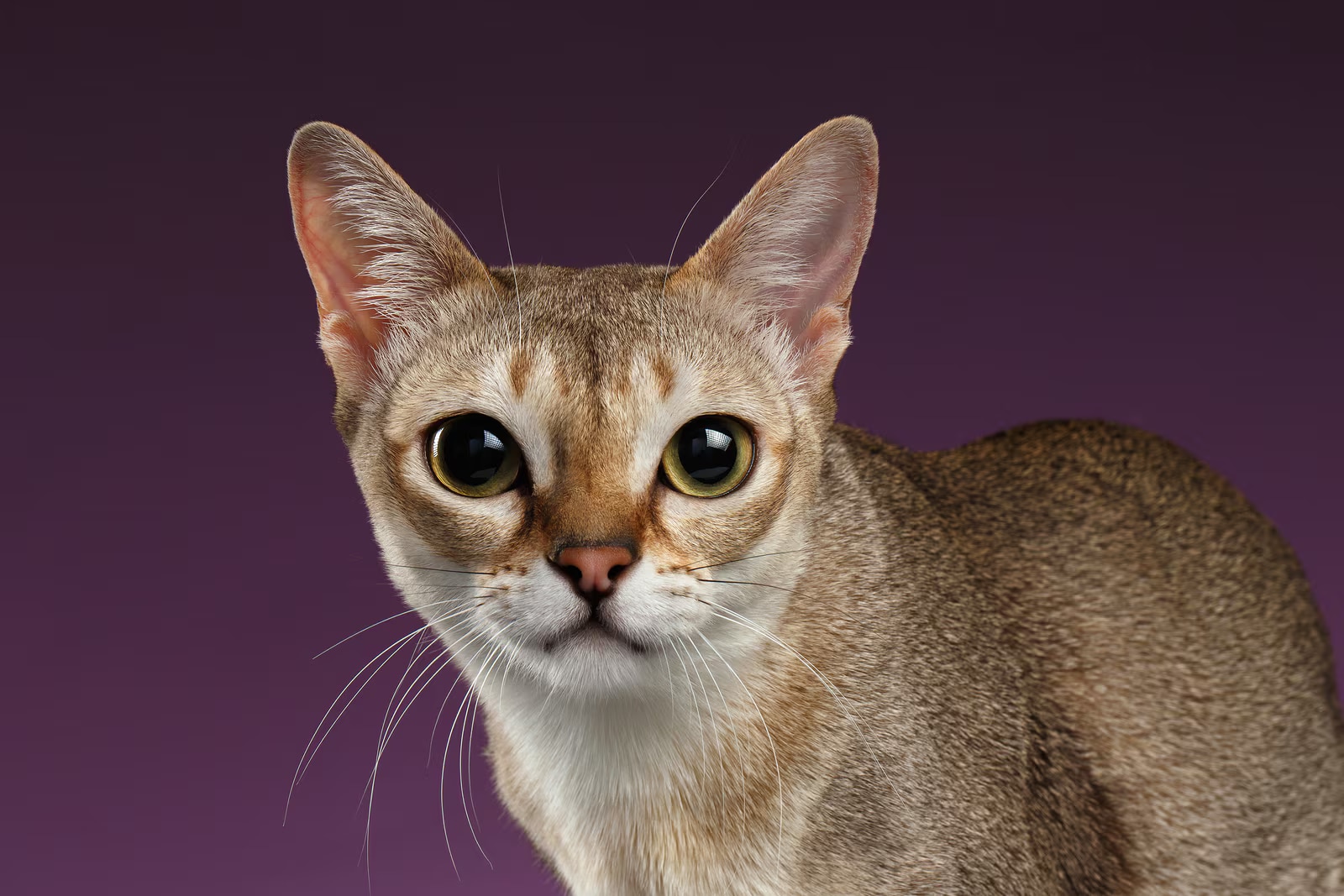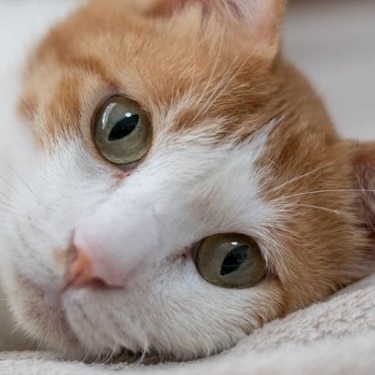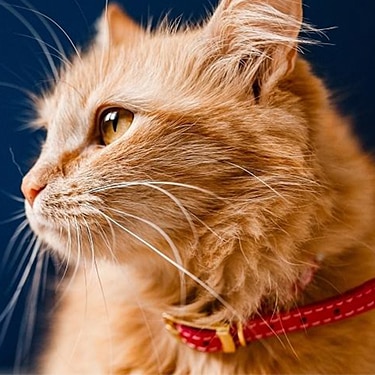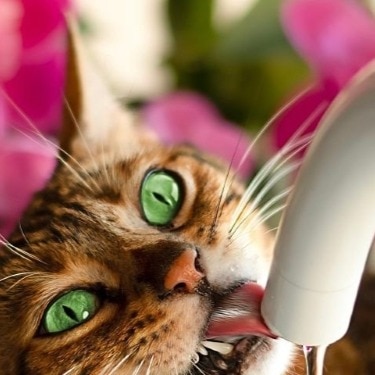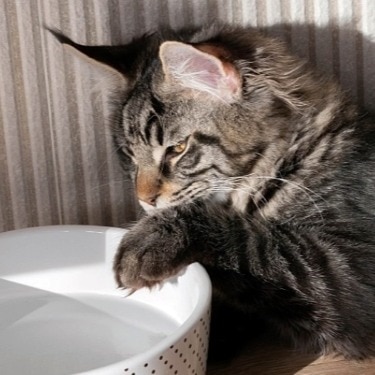While it might be the Singapura's unique looks that first interest you in the breed, it will be her
The Singapura cat might be little, but the breed is certainly not delicate! This cat has a high-energy personality that shines. She is a curious, highly intelligent, and frisky breed that thrives on the attention of her family. Singapura cats are muscular and love to climb and explore. They want to be in the middle of the action and will be right by your side, for instance, while you do chores—ready to play if you thrust a duster in their direction.
Singapuras are
One thing they don't like: loud noises. They can spook if they hear an unexpected loud noise so keep that in mind if you live in a noisy neighborhood, have kids prone to shrieking, or a dog that likes to bark.
Singapuras are generally of good health and have a life expectancy between eleven and fifteen years, though cats as old as eighteen have been recorded. Breeders are concerned, however, about the lack of genetic diversity in the breed. A study published in the journal Genomics, found the Singapura and Burmese cats have the least genetic diversity among the twenty-two breeds studied. Because of that concern, it is smart to adopt a Singapura cat from a reputable breeder who offers a written health guarantee. It's also important to note that it's possible to find Singapura cats occasionally at a shelter, so you should look there first.
Birthing is also a health issue for Singapuras. They're often unable to birth kittens because of weak muscles, a health condition called uterine inertia. That means kittens are often delivered by cesarean section.
The other unique health issue to the breed is called pyruvate kinase deficiency, which may result in anemia and other blood-related issues, explains PetMD. The only available treatment for this disease is a bone marrow transplant.
A Singapura cat—like any animal that is new to your home—should visit the vet as soon as possible after you adopt her to make sure she has no health issues that need to be treated.
The origin of the breed is murky and controversial. Originally, cat fanciers Tommy and Hal Meadow said they brought three cats (that later came to be known as Singapura cats) back to America from the streets of Singapore in the mid-1970s, according to The Cat Fanciers' Association. The organization decided to recognize the Singapura officially for registration in 1982 and for championship competition in 1988.
However, the origin story of the breed was called into question when the Singapore Tourist and Promotion Board researched the cat's history because it wanted to use the breed as a mascot for the southeastern Asia sovereign island. During that research it came to light that the cats the Meadows said they found in Singapore had actually been brought there by the couple from the United States. It is now believed the Singapura is a cross between a Burmese and Abyssinian and was first bred in the United States by the Meadows before returning to Singapore.
Despite the controversy and the murky background of the breed's origin, The Cat Fanciers' Association kept the Singapura's status as a natural breed.
Also, despite the controversy over the breed's origin, the Singapore Tourist and Promotion Board decided in 1991 to use the cat as its tourist mascot. In Singapore, they call the cat a kucinta, which is an amalgamation of the Malay words kucing (cat) and cinta (love).
The Singapura is tiny but large in personality! Her curiosity, friendliness, loyalty, and general good health make the Singapura a great choice as a family pet. It might be her looks that initially attract you to her, but it will be her personality that makes her unforgettable.
Adopt a pet. Change a life.
Are you prepared to adopt a pet? Use these tools to make sure you are ready for the commitment.
Adopt a pet. Change a life.
Are you prepared to adopt a pet? Use these tools to make sure you are ready for the commitment.












